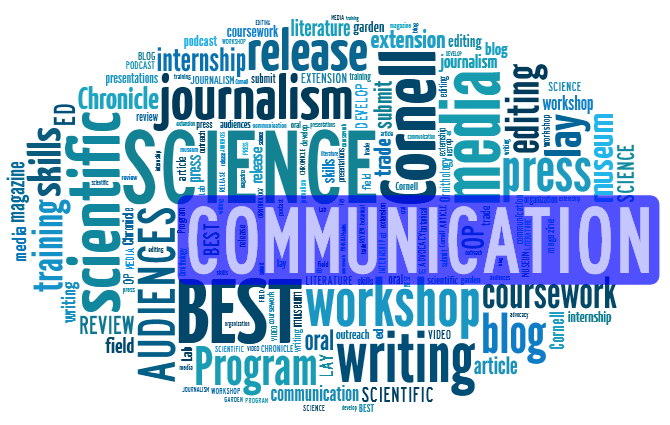Better Science Communication - Getting your message across effectively
Published on and modified on • Permalink
Getting your message across is a key to every researcher and scientist. Thus, effective communication skills are regarded as part of the professional competences that all science students and academic scholars should have today. For many scientists, though, this role as a science communicator may appear challenging as they may fear that their promotion and communication activities can erode their academic credibility and damage their professional seriousness.
Actually, it is the other way around! The more skillful a science communicator you are, the more your own research and academic work get visibility and recognition. Especially now as there seems to be an insatiable interest in evidence-based knowledge across societies, effective science communication becomes an essential means of conveying your message to diverse audiences. Putting forward in a clear and concise manner the outcomes of your research to funding bodies, policy and decision makers, general audience, school children and academic peers calls for a customized approach to satisfy the information needs of these different stakeholders.
Science communication is a necessary ingredient of every scientist’s daily work. It ranges, for example, from writing peer-reviewed articles to giving lectures to university students, from preparing project proposals to talking on the radio or television, from blogging to tweeting, from giving policy advice to exchanging views with other academics representing different disciplines. All this becomes easier, if you know how to communicate effectively and how to modify your message for different purposes.
So, what should scientists bear in mind when making an effort to popularize their academic work in writing to the general public? For explaining the results of their often very complex research or describing their own field of science, they could easily improve the effectiveness of their science communication by following these principles:
KEEP IT SHORT AND SIMPLE – First identify your audience and then make sure you have a distinguished message instead of just providing information. Avoid approaching the subject with too many details and with too much jargon. Rather keep your message on a general level and focus on one specific perspective that the readers well can relate to in their everyday life.
KEEP IT SMART, BUT SERIOUS – As your duty is to guide a reader through an unfamiliar trail, simply tell the story in straightforward language. The more concrete you are, the better the impact will be. Use the appropriate style of writing. Keep it serious and punchy, if you have a breaking news story. With a blog text, take a different, more relaxed approach. It is your chance to be clever.
KEEP IT SELF-SUSTAINING – Define the goal you want to achieve with your science communication. Also make sure you have chosen the right channel/s and medium/media for the given purpose. In any case, whatever you intend to communicate should be a self-standing message which is easily recognized, received and understood by the audience. Well-designed visualizations, matching photos or on the Internet even videoclips attached to your text will help catch the readers’ attention.
MAKE IT SOCIALLY SHAREABLE – If you write for a traditional newspaper or a print magazine, check if your text will also be published online as to increase its dissemination potential and accessibility through social media. As long as you manage to incorporate the human voice and interest in your science communication, you can be almost sure that it starts spreading on its own.
Visualisation: Wordcloud from Cornell University website
